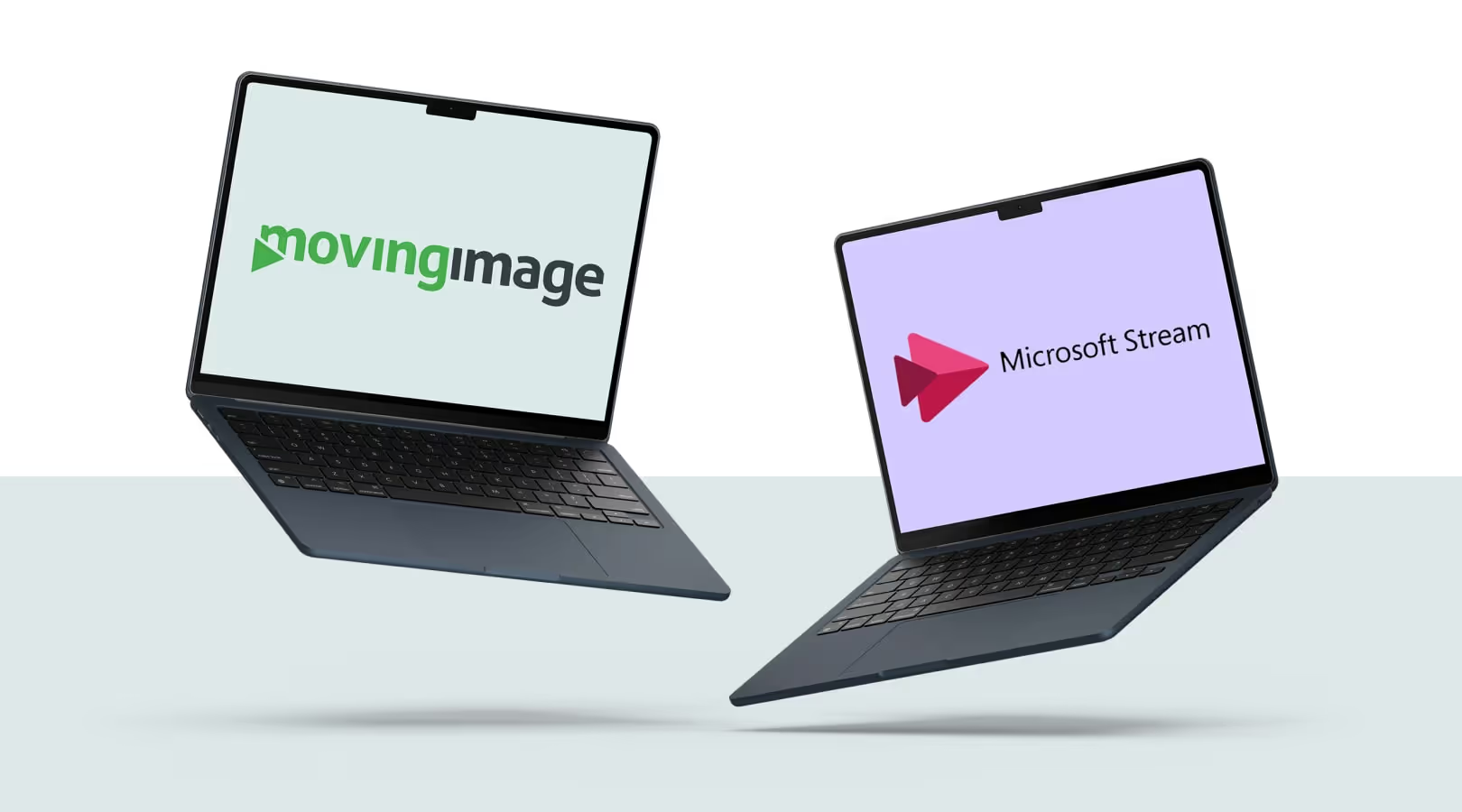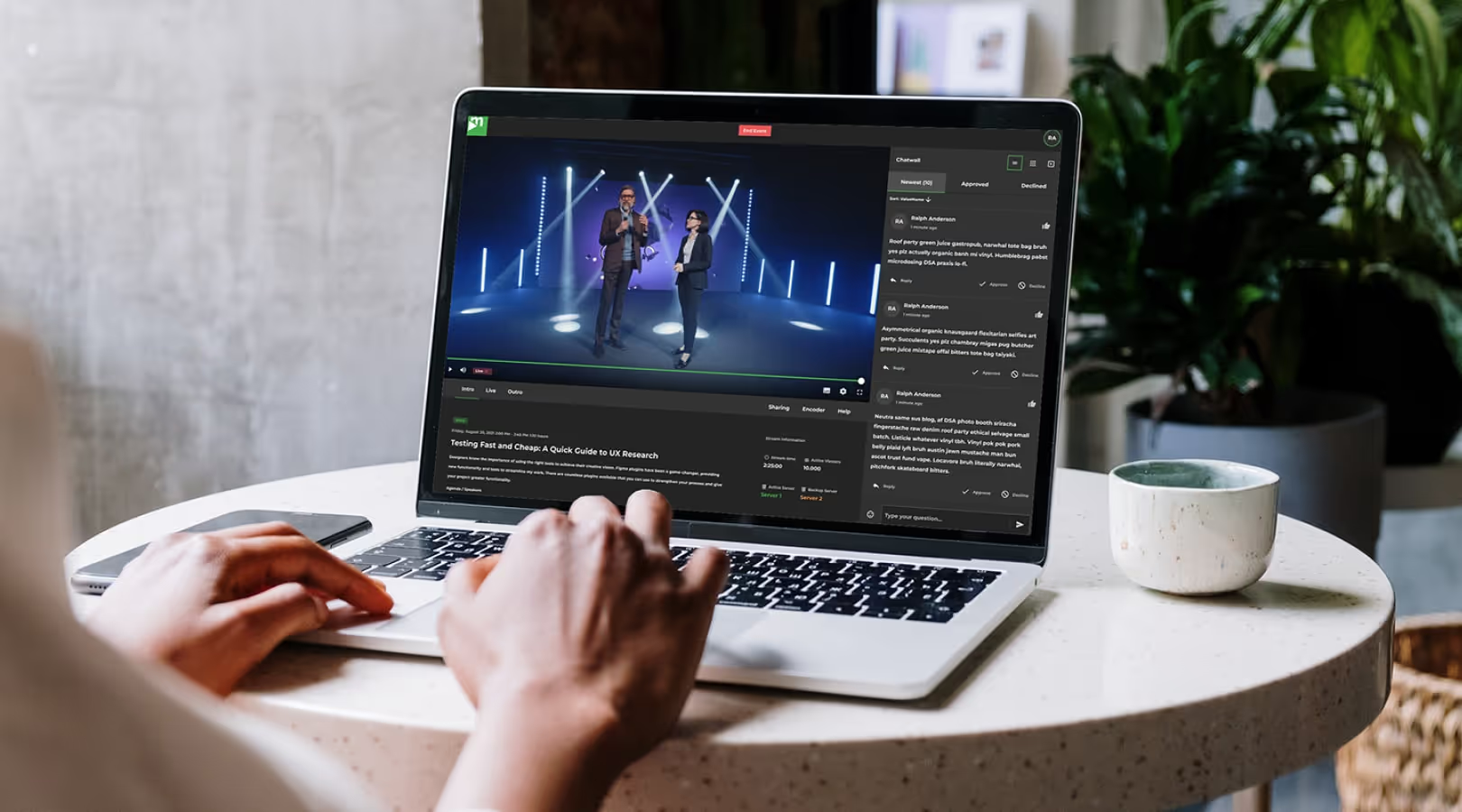Consolidating video platforms: how to create efficiency and clarity

Driving your success with video

Consolidating video platforms: how to create efficiency and clarity
“When nobody knows how many platforms there actually are, it’s time for change.” This realization captures a challenge many organizations face. Over time, so-called siloed solutions emerge: different tools that coexist but aren’t connected—and that eventually become unscalable. In the video space, this often results in scattered content, complex processes, and high administrative overhead.
The good news: there are proven ways out of this chaos. Companies that end the fragmentation and move to a centralized platform not only gain clarity but also lay the foundation for a modern, future-proof video strategy.
Why platform sprawl slows down your video strategy

When video management grows without a clear strategy, it quickly turns into a confusing patchwork of systems. Each department adopts its own solution, with separate contracts and processes. What may seem flexible at first eventually becomes a real bottleneck.
The consequences are obvious: content is scattered across multiple platforms, no one has a complete overview, reporting is nearly impossible, and the user experience differs from system to system. On top of that come high licensing costs, duplicate review processes, heavy administrative effort—and steadily rising expenses.
Things become especially critical when responsibilities are unclear. Who is accountable for a video? What retention periods apply? Without clear governance, such questions remain unanswered—posing a significant risk, particularly in regulated industries.
To make matters worse, every platform change—whether due to new features or security requirements—triggers renewed discussions with data protection, IT, legal, or employee representation. With several platforms in use at the same time, this effort multiplies and repeats year after year.
Your step-by-step consolidation plan

Bringing order back into a fragmented system landscape is no easy task, but it always starts with the same principle: create transparency. Anyone who wants to avoid platform sprawl needs a central solution that meets all requirements—from security and compliance to user-friendliness and scalability.
Step 1: take stock
The first step is a thorough inventory: all existing systems and processes are mapped, including their strengths, weaknesses, and costs. Only then does it become clear where redundancies exist and which functions are truly needed.
Step 2: involve stakeholders early
The next step is to bring stakeholders to the table from the very beginning. IT, communications, data protection, and business units all have different requirements that need to be considered. The broader the project team, the more sustainable the outcome.
Step 3: clarify requirements with a use-case matrix
A use-case matrix helps to prioritize requirements and compare them against the existing platforms. This structured approach creates clarity about which systems can be consolidated, replaced, or phased out entirely.
Step 4: choose a central platform
In the end, the goal is to select a single platform that not only fits technically, but also makes sense economically and scales in the long term. What matters most is that the solution covers all critical requirements—from compliance and governance to user experience—providing a reliable foundation for a modern video strategy.
The benefits of a central video platform

Consolidating onto a single platform is not a quick fix, but a process. It starts with a comprehensive content review: every video is assessed, categorized, and either migrated, archived, or deleted. This step often reveals just how fragmented the old setup really was—while finally creating the much-needed overview.
Once the content is consolidated, a solid foundation is in place on which further benefits can build:
Less complexity, more clarity
Instead of juggling multiple platforms, there is now a single point of access for all videos. Processes become simpler, responsibilities clearer, and integrations leaner.
Better findability and content usage
With unified structures, central metadata, and smart search functions, videos can be located quickly and reused efficiently. This saves time and significantly increases the actual use of existing content.
Tangible cost savings
Eliminating redundant systems not only reduces licensing costs. The internal workload for approvals, reviews, and support also drops noticeably.
Governance made real
A central rights and roles concept ensures clear accountability. Videos can be managed, archived, or deleted transparently—always in line with data protection and compliance requirements.
A unified user experience
One central system delivers a consistent look and feel, standardized workflows, and an improved user experience—both for the teams uploading content and for those consuming it.
From order to innovation: How to take video management to the next level

A central video platform is not an endpoint, but a foundation. Once content is clearly consolidated and governance rules are in place, space opens up for what really matters: innovation and further development.
Leverage analytics
With centralized data, video usage and engagement can finally be analyzed holistically. This allows companies to identify which content works—and which doesn’t.
Drive automation
Automated transcriptions, captions, or translations save time and make content more accessible. This not only increases efficiency but also supports accessibility.
Make communication more inclusive
Accessibility features ensure that videos are understandable for all employees—regardless of language or hearing ability.
Build digital skills
When all departments work with the same platform, experience with video grows across the organization. This strengthens communication and accelerates overall digital transformation.
In the end, it becomes clear: organizations that dare to break down old structures and invest in a centralized video strategy gain more than efficiency and oversight—they also unlock the freedom to experiment and make video communication truly future-ready.
Our Speakers
“When nobody knows how many platforms there actually are, it’s time for change.” This realization captures a challenge many organizations face. Over time, so-called siloed solutions emerge: different tools that coexist but aren’t connected—and that eventually become unscalable. In the video space, this often results in scattered content, complex processes, and high administrative overhead.
The good news: there are proven ways out of this chaos. Companies that end the fragmentation and move to a centralized platform not only gain clarity but also lay the foundation for a modern, future-proof video strategy.
Why platform sprawl slows down your video strategy

When video management grows without a clear strategy, it quickly turns into a confusing patchwork of systems. Each department adopts its own solution, with separate contracts and processes. What may seem flexible at first eventually becomes a real bottleneck.
The consequences are obvious: content is scattered across multiple platforms, no one has a complete overview, reporting is nearly impossible, and the user experience differs from system to system. On top of that come high licensing costs, duplicate review processes, heavy administrative effort—and steadily rising expenses.
Things become especially critical when responsibilities are unclear. Who is accountable for a video? What retention periods apply? Without clear governance, such questions remain unanswered—posing a significant risk, particularly in regulated industries.
To make matters worse, every platform change—whether due to new features or security requirements—triggers renewed discussions with data protection, IT, legal, or employee representation. With several platforms in use at the same time, this effort multiplies and repeats year after year.
Your step-by-step consolidation plan

Bringing order back into a fragmented system landscape is no easy task, but it always starts with the same principle: create transparency. Anyone who wants to avoid platform sprawl needs a central solution that meets all requirements—from security and compliance to user-friendliness and scalability.
Step 1: take stock
The first step is a thorough inventory: all existing systems and processes are mapped, including their strengths, weaknesses, and costs. Only then does it become clear where redundancies exist and which functions are truly needed.
Step 2: involve stakeholders early
The next step is to bring stakeholders to the table from the very beginning. IT, communications, data protection, and business units all have different requirements that need to be considered. The broader the project team, the more sustainable the outcome.
Step 3: clarify requirements with a use-case matrix
A use-case matrix helps to prioritize requirements and compare them against the existing platforms. This structured approach creates clarity about which systems can be consolidated, replaced, or phased out entirely.
Step 4: choose a central platform
In the end, the goal is to select a single platform that not only fits technically, but also makes sense economically and scales in the long term. What matters most is that the solution covers all critical requirements—from compliance and governance to user experience—providing a reliable foundation for a modern video strategy.
The benefits of a central video platform

Consolidating onto a single platform is not a quick fix, but a process. It starts with a comprehensive content review: every video is assessed, categorized, and either migrated, archived, or deleted. This step often reveals just how fragmented the old setup really was—while finally creating the much-needed overview.
Once the content is consolidated, a solid foundation is in place on which further benefits can build:
Less complexity, more clarity
Instead of juggling multiple platforms, there is now a single point of access for all videos. Processes become simpler, responsibilities clearer, and integrations leaner.
Better findability and content usage
With unified structures, central metadata, and smart search functions, videos can be located quickly and reused efficiently. This saves time and significantly increases the actual use of existing content.
Tangible cost savings
Eliminating redundant systems not only reduces licensing costs. The internal workload for approvals, reviews, and support also drops noticeably.
Governance made real
A central rights and roles concept ensures clear accountability. Videos can be managed, archived, or deleted transparently—always in line with data protection and compliance requirements.
A unified user experience
One central system delivers a consistent look and feel, standardized workflows, and an improved user experience—both for the teams uploading content and for those consuming it.
From order to innovation: How to take video management to the next level

A central video platform is not an endpoint, but a foundation. Once content is clearly consolidated and governance rules are in place, space opens up for what really matters: innovation and further development.
Leverage analytics
With centralized data, video usage and engagement can finally be analyzed holistically. This allows companies to identify which content works—and which doesn’t.
Drive automation
Automated transcriptions, captions, or translations save time and make content more accessible. This not only increases efficiency but also supports accessibility.
Make communication more inclusive
Accessibility features ensure that videos are understandable for all employees—regardless of language or hearing ability.
Build digital skills
When all departments work with the same platform, experience with video grows across the organization. This strengthens communication and accelerates overall digital transformation.
In the end, it becomes clear: organizations that dare to break down old structures and invest in a centralized video strategy gain more than efficiency and oversight—they also unlock the freedom to experiment and make video communication truly future-ready.



.avif)


.avif)






.avif)




